HKJ
Flashaholic
[size=+3]Status for 2019[/size]

This year I have published a review nearly each day. Batteries, battery charges and USB chargers with regular intervals, and test equipment (Most multimeters), power supplies and other stuff less regularly.
To keep up to date on my reviews it is a good idea to check the "Last additions" section on my front page, it will list the last couple of reviews/test/articles I have done, just below it there might also be information about good offers, coupon codes, etc. for stuff I have just reviewed (When present it will be from the dealer that gave me the review item).
[size=+2]Batteries[/size]
The batteries have not reached higher capacity this year, but the 21700 size is more common now.
/DSC_4600.jpg)
/DSC_4593.jpg)
The top capacities for 21700 is the 5000mAh cell that gives around 4800mAh at 3A.
/DSC_8694.jpg)
This cell from Samsung I tested in 2017 is still the best high current 21700, it can maintain 30A and capacity is still around 3000mAh
%202018/DSC_3694.jpg)
This Vapcell from 2018 is also a very good high current cell, but it is strained at 30A and cannot deliver full capacity.

%202018/DSC_4738.jpg)
/DSC_8351.jpg)
The 14500 (i.e. AA sized) LiIon battery has got a new chemistry, this means about 1000mAh and 3A current.
/DSC_7977.jpg)
Vapcell has introduced a new 10440 (i.e. AAA) sized) LiIon battery and it has the improved LiIon chemistry, this means it can deliver 3A and be one of the highest capacity 10440 cells around.
One of the traps on Ebay & Aliexpress for batteries is:
/DSC_0485.jpg)
This battery has a Samsung type number, but it is not announced to be from that brand and it is not.
With AA/AAA batteries I have test a sample of different brands, including many AAA sized ones, there is nothing really new with these batteries, but LiIon AA and to a lesser degree AAA batteries with 1.5V is more common now.
/DSC_8151.jpg)
A 1.5V (more like 1.8V) LiIon chemistry that can be charged very fast and can handle many charge cycles. Sadly the capacity is very low and the voltage is a bit high for most AA equipment. They are a obvious candidate for OEM use, build into a product that is usually placed in a charger stand.
Other brands use a normal LiIon cell and a buck converter inside the battery:
/DSC_8636.jpg)

USB charged 1.5V LiIon batteries.
/DSC_1435.jpg)
/DSC_9125.jpg)
/DSC_1442.jpg)
These 1.5V LiIon batteries requires a special charger but not the same type. The last one is AAA size.

I have used a lot of time to test 1.5V batteries at low current, this makes it possible to estimate battery run time for a lot of lower powered equipment. It is in two parts with different batteries: Part 1 and Part 2
I uses these data when estimating battery lifetime for multimeters.
[size=+2]Battery chargers[/size]
As usually I test a lot of battery chargers, both good and bad types. Here is a few highlights, the total list of charger can be found on my website or in a more organised table.

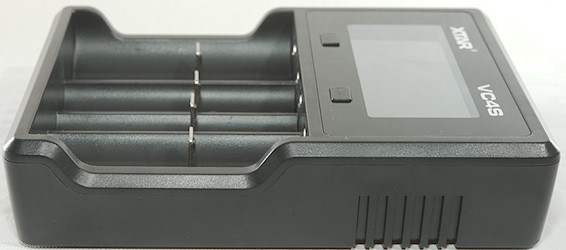
More USB powered charges will now use Quick Charge on the USB input (If available), this means charging at higher power levels than older USB powered chargers.


Lightweight charger and power banks, the first one do also include some light.

Eight slot analysing charger in metal that can handle many battery chemistries, but the slots only fit AA/AAA sizes batteries. This charger also exist in 16 & 24 slot versions. It is a nice charger for maintaining many NiMH batteries with regular charging. The analyser can be used once in a while to see what batteries needs to be replaced.

Vapcell has gone into the charger market and with a very nice analyzing charger.
[size=+2]USB chargers[/size]
I have reviewed a lot of USB chargers, both mains powered and DC powered (Usually from a car). All reviews can be found in my tables: Mains powered chargers and DC powered chargers

I like this Ikea charger, it is not perfect (Power is too low for 3 ports), but it is has a lot of mounting options and the power supply is remote from the USB output. This makes it easy to place USB outputs nearly everywhere and hide the plug pack somewhere else.

A very powerful USB-C PD charger with 65 Watt output.
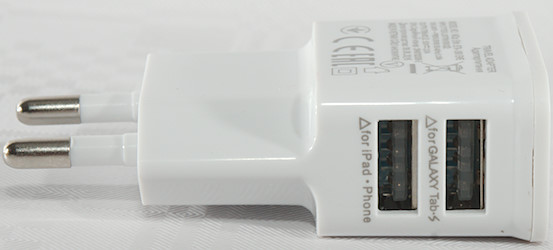
This style of chargers is nearly always bad, even if they are marked Samsung.

This style is also nearly always bad.

A simple, but good car charger.


One style of car chargers that has showed up from a lot of brands is dual output with QC/PD controlled from one chip. Generally these chargers works fine for one device at a time, but has trouble when both outputs are used. Not due to current, but because the chip can only handle one smart (QC/PD) output at a time.

A high power DC powered USB-C PD car charger, it can boost voltage, this means it can charger a device requiring 20V from a 12V car battery.

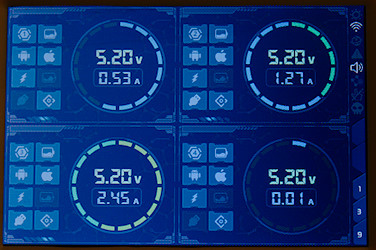
Complete overkill for a charger and way to difficult to use as a power supply.


Very cheap and nearly completely useless car chargers

The chip inside one of them looked this way before I was finished with my tests.
[size=+2]USB test equipment[/size]
I have tested some USB test equipment, but not very much this year.

A good USB-C meter and it has a switch that makes it possible to use stand-alone.
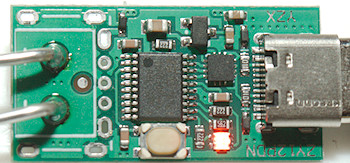
A trigger for PD, it can be adjusted to a voltage and will then always ask for that voltage when connected to a PD charger.
[size=+2]Digital multimeters[/size]
During the year I have reduced my publishing speed for multimeters, but I have tested 35 meters. The index of all tested meters.
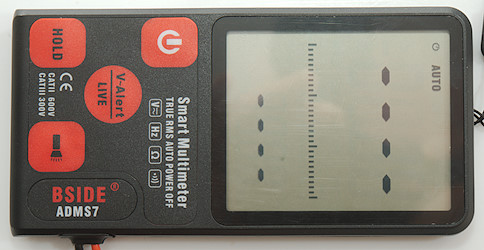
Nice big screen, but the meter has very limited ranges and functionality.

There have been some strange combinations of manual and auto ranges, I wonder why. Most auto range meters can easily be switched to manual range in the very few cases where it is an advantage and there is space for many more functions and ranges on the switch of a auto ranging meter.

A multimeter with off-line data collection and bluetooth interface to read the data, but also to activate off-line collection. This was a bit strange, until I found out that off-line collection is handled by the bluetooth module and not by the meter processor, that do not know about it.

One of the top Keysight multimeters, it is large, heavy, slow and very precise.
I published a few more articles about multimeters:
Multimeter guide
This one explains about the different functions on a multimeter, in some way it is a generic multimeter manual.
Multimeter design
Multimeter protection and safety
How is a multimeter build inside, here I look at how the different ranges in a multimeter is done and protected.
[size=+2]Projects[/size]
This is a new category and will contain stuff that I make, it can be 3D printed stuff, electronic and/or software. A lot of it will include files that makes it possible to copy the project, but some of it also just to show something I have made.

This computer controlled relay is very useful for testing stuff, it can switch 10A on each channel and can generate PWM and time signals.


This is a Arduino library that can handle just about any serial 7/14/16 segment display on Ebay and Aliexpress. I have also designed a couple of display modules for it. This means it is possible to easy change between different displays during the development of a Arduino project, without needed to rewrite a lot of code. The library is fairly compact, because only used code is included.

A 18x65 to 18x80mm long rod done with a 3D printer and a metal screw inside, I use it to check how long batteries a charger can accept.
[size=+2]Anything else[/size]
There have been some test equipment and power supplies in the anything else category.

Very cheap and very useful logic analyser for microprocessor projects. I did also look at some very cheap oscilloscopes, they work, but are not that good.


Some of the converters and power supplies I have tested.
[size=+2]What to expect in 2020[/size]
The reviews will continue in 2020, this time I am fairly sure there will be considerable less reviews. I expect to do more projects, I have a computer controlled charger that is finished, but the project is not published yet. I am working on a couple of other projects and some of my 3D designs may end up being published as projects.
To discuss or ask questions about specific reviews they can usual be found on CPF, BLF and fonarevka (Not all reviews are posted everywhere).
Suggestions about what to test are welcome. When sending suggestion remember to include a link to a shop that ships to EU (Denmark). It is also possible to directly send my items or ask dealers/manufactures if they will send stuff for review.

This year I have published a review nearly each day. Batteries, battery charges and USB chargers with regular intervals, and test equipment (Most multimeters), power supplies and other stuff less regularly.
To keep up to date on my reviews it is a good idea to check the "Last additions" section on my front page, it will list the last couple of reviews/test/articles I have done, just below it there might also be information about good offers, coupon codes, etc. for stuff I have just reviewed (When present it will be from the dealer that gave me the review item).
[size=+2]Batteries[/size]
The batteries have not reached higher capacity this year, but the 21700 size is more common now.
/DSC_4600.jpg)
/DSC_4593.jpg)
The top capacities for 21700 is the 5000mAh cell that gives around 4800mAh at 3A.
/DSC_8694.jpg)
This cell from Samsung I tested in 2017 is still the best high current 21700, it can maintain 30A and capacity is still around 3000mAh
%202018/DSC_3694.jpg)
This Vapcell from 2018 is also a very good high current cell, but it is strained at 30A and cannot deliver full capacity.

%202018/DSC_4738.jpg)
/DSC_8351.jpg)
The 14500 (i.e. AA sized) LiIon battery has got a new chemistry, this means about 1000mAh and 3A current.
/DSC_7977.jpg)
Vapcell has introduced a new 10440 (i.e. AAA) sized) LiIon battery and it has the improved LiIon chemistry, this means it can deliver 3A and be one of the highest capacity 10440 cells around.
One of the traps on Ebay & Aliexpress for batteries is:
/DSC_0485.jpg)
This battery has a Samsung type number, but it is not announced to be from that brand and it is not.
With AA/AAA batteries I have test a sample of different brands, including many AAA sized ones, there is nothing really new with these batteries, but LiIon AA and to a lesser degree AAA batteries with 1.5V is more common now.
/DSC_8151.jpg)
A 1.5V (more like 1.8V) LiIon chemistry that can be charged very fast and can handle many charge cycles. Sadly the capacity is very low and the voltage is a bit high for most AA equipment. They are a obvious candidate for OEM use, build into a product that is usually placed in a charger stand.
Other brands use a normal LiIon cell and a buck converter inside the battery:
/DSC_8636.jpg)

USB charged 1.5V LiIon batteries.
/DSC_1435.jpg)
/DSC_9125.jpg)
/DSC_1442.jpg)
These 1.5V LiIon batteries requires a special charger but not the same type. The last one is AAA size.

I have used a lot of time to test 1.5V batteries at low current, this makes it possible to estimate battery run time for a lot of lower powered equipment. It is in two parts with different batteries: Part 1 and Part 2
I uses these data when estimating battery lifetime for multimeters.
[size=+2]Battery chargers[/size]
As usually I test a lot of battery chargers, both good and bad types. Here is a few highlights, the total list of charger can be found on my website or in a more organised table.


More USB powered charges will now use Quick Charge on the USB input (If available), this means charging at higher power levels than older USB powered chargers.


Lightweight charger and power banks, the first one do also include some light.

Eight slot analysing charger in metal that can handle many battery chemistries, but the slots only fit AA/AAA sizes batteries. This charger also exist in 16 & 24 slot versions. It is a nice charger for maintaining many NiMH batteries with regular charging. The analyser can be used once in a while to see what batteries needs to be replaced.

Vapcell has gone into the charger market and with a very nice analyzing charger.
[size=+2]USB chargers[/size]
I have reviewed a lot of USB chargers, both mains powered and DC powered (Usually from a car). All reviews can be found in my tables: Mains powered chargers and DC powered chargers

I like this Ikea charger, it is not perfect (Power is too low for 3 ports), but it is has a lot of mounting options and the power supply is remote from the USB output. This makes it easy to place USB outputs nearly everywhere and hide the plug pack somewhere else.

A very powerful USB-C PD charger with 65 Watt output.

This style of chargers is nearly always bad, even if they are marked Samsung.

This style is also nearly always bad.

A simple, but good car charger.


One style of car chargers that has showed up from a lot of brands is dual output with QC/PD controlled from one chip. Generally these chargers works fine for one device at a time, but has trouble when both outputs are used. Not due to current, but because the chip can only handle one smart (QC/PD) output at a time.

A high power DC powered USB-C PD car charger, it can boost voltage, this means it can charger a device requiring 20V from a 12V car battery.


Complete overkill for a charger and way to difficult to use as a power supply.


Very cheap and nearly completely useless car chargers

The chip inside one of them looked this way before I was finished with my tests.
[size=+2]USB test equipment[/size]
I have tested some USB test equipment, but not very much this year.

A good USB-C meter and it has a switch that makes it possible to use stand-alone.

A trigger for PD, it can be adjusted to a voltage and will then always ask for that voltage when connected to a PD charger.
[size=+2]Digital multimeters[/size]
During the year I have reduced my publishing speed for multimeters, but I have tested 35 meters. The index of all tested meters.

Nice big screen, but the meter has very limited ranges and functionality.

There have been some strange combinations of manual and auto ranges, I wonder why. Most auto range meters can easily be switched to manual range in the very few cases where it is an advantage and there is space for many more functions and ranges on the switch of a auto ranging meter.

A multimeter with off-line data collection and bluetooth interface to read the data, but also to activate off-line collection. This was a bit strange, until I found out that off-line collection is handled by the bluetooth module and not by the meter processor, that do not know about it.

One of the top Keysight multimeters, it is large, heavy, slow and very precise.
I published a few more articles about multimeters:
Multimeter guide
This one explains about the different functions on a multimeter, in some way it is a generic multimeter manual.
Multimeter design
Multimeter protection and safety
How is a multimeter build inside, here I look at how the different ranges in a multimeter is done and protected.
[size=+2]Projects[/size]
This is a new category and will contain stuff that I make, it can be 3D printed stuff, electronic and/or software. A lot of it will include files that makes it possible to copy the project, but some of it also just to show something I have made.

This computer controlled relay is very useful for testing stuff, it can switch 10A on each channel and can generate PWM and time signals.


This is a Arduino library that can handle just about any serial 7/14/16 segment display on Ebay and Aliexpress. I have also designed a couple of display modules for it. This means it is possible to easy change between different displays during the development of a Arduino project, without needed to rewrite a lot of code. The library is fairly compact, because only used code is included.

A 18x65 to 18x80mm long rod done with a 3D printer and a metal screw inside, I use it to check how long batteries a charger can accept.
[size=+2]Anything else[/size]
There have been some test equipment and power supplies in the anything else category.

Very cheap and very useful logic analyser for microprocessor projects. I did also look at some very cheap oscilloscopes, they work, but are not that good.


Some of the converters and power supplies I have tested.
[size=+2]What to expect in 2020[/size]
The reviews will continue in 2020, this time I am fairly sure there will be considerable less reviews. I expect to do more projects, I have a computer controlled charger that is finished, but the project is not published yet. I am working on a couple of other projects and some of my 3D designs may end up being published as projects.
To discuss or ask questions about specific reviews they can usual be found on CPF, BLF and fonarevka (Not all reviews are posted everywhere).
Suggestions about what to test are welcome. When sending suggestion remember to include a link to a shop that ships to EU (Denmark). It is also possible to directly send my items or ask dealers/manufactures if they will send stuff for review.

